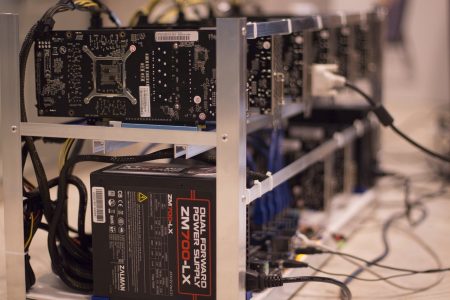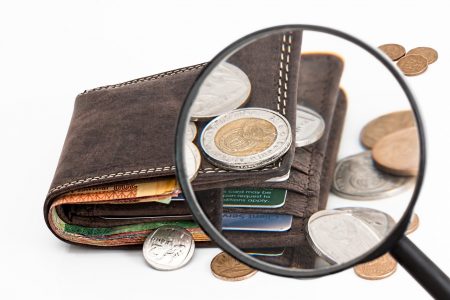Blockchain. Cryptocurrency. Ledger. The very words alone are enough to leave you frantically Googling them, scratching your head in confusion, and slamming your laptop shut.
Don’t tear your hair out in frustration, we’re here to help! Here’s a look at some of the most common jargon in the world of cryptocurrency, plus an explanation of what each means.
Take a deep breath, it will all start to make sense soon enough. You’ll soon be dropping terms like a crypto-pro.
Address
Just like an email address is a destination to send and receive data; in this case we are talking about the transfer of cryptocurrency. It is a combination of case-sensitive letters and numbers used to send or request payment.
While it’s possible to use the same token for multiple transactions, it’s advisable to generate a new address each transaction. This is usually achieved with a simple click or two in your wallet (see below).
Altcoin
While bitcoin was the first successful cryptocurrency, it is not the only one in existence.
An altcoin is any crypto coin that is NOT Bitcoin; it is an alternative. As more and more altcoins enter the market and compete with Bitcoin, eventually the term will probably fade into obscurity.
Bitcoin
If you take away one thing from this post, it’s that bitcoin is just one of many cryptocurrencies. That said, you could certainly call it the granddaddy, released by Satoshi Nakamoto in 2009 as a “peer-to-peer electronic cash system.”
If the world of cryptocurrency were the car industry, bitcoin would be the Ford Model T: the original innovator, paving the way for the rest. The iPhone in the world of smartphones. You get the picture.
Related: Bitcoin, Explained
Blockchain
You can’t get your head around cryptocurrency without first understanding blockchain, so let’s get to the meat of it.
Picture a spreadsheet, but one that exists across the globe located on thousands of computers. With no one point of access for hackers or any other nasty threats, we are talking about ultimate security.
Imagine saving a word document on your PC’s hard drive versus uploading it into a million interlinked, secured and encrypted hard drives. Which is easier to alter?
Block
There’s no chain without the block, so that’s where these guys come in.
If a ledger is a book, the block is the page in that book. But this is no normal page that can be erased and rewritten; each block is an individual file that cannot be interfered or tampered with. It is a list of transactions in chronological order, and it’s not going anywhere.
Fork
Generally speaking in the world of crypto, forks are when a cryptocurrency splits in two. They aren’t tools that bring delicious morsels into your life; they cause a great deal of crypto-trouble. They occur when a cryptocurrency’s code is altered, creating an old chain and a new version.
There are two types of forks:
- Hard fork: a new update may cause problems for older versions, so all users must update. Bummer.
- Soft fork: a new update will not cause problems for older versions, so users do not have to update (but can if they choose).
Transactions can be lost during this process, and this involves much head-rubbing in pain for any businesses involved. Just try to get your head around Bitcoin’s fork for a recent example of the chaos a fork can cause.
HODL
The overly-serious vocab of cigar-smoking bankers hasn’t found a footing in cryptocurrency, after all we’re talking about something that was forged in the online world. Crypto jargon is a dynamic part of it; the world of memes, vines, and ROFLing.
A crypto trader’s drunken typo of ‘hold’ quickly became crypto-talk to describe ‘holding’ your cryptocurrency – a long-term trading strategy. Instead of rapidly purchasing and selling a cryptocurrecy, HODLing is waiting for a significant increase in value before making a trade.
Initial Coin Offering (ICO)
Every new cryptocurrency needs funding to start up, and that’s where the ICO comes into play.
At the outset of a project, the startup will sell a percentage of the total cryptocurrency, usually in exchange for other cryptocurrencies or USD. Many new investors picture a Bitcoin-style boom as they consider investing in upcoming ICOs, but unfortunately many currencies flop; this is the nature of the beast.
Related: J.R. Willett: ICO’s Cornerstone Personality
Key
Every piece of cryptocurrency requires a public key and a private key.
The public key is a code proving the existence of your currency on the blockchain, and your private key is your secure means to access it, similar to your bank card PIN (except a million times safer).
Ledger
Put simply, a ledger is a large database that is spread across a number of countries, sites and locations.
Sounds a lot like blockchain, right? Without getting in over our heads, we can think of blockchain as one specific application of the principle of a ledger.
Mining
As new blocks are discovered on the blockchain, miners use their hardware to do some heavy-handed calculations and “solve” the blocks.
This makes the blockchain more secure, as transactions are confirmed and secured into the ledger. In turn for their services, they are rewarded with tokens for solving these blocks.

Node
Without making things unnecessarily complex, a node is a single computer connected to the blockchain. As it receives the blockchain in full, it supports the entire system by validating transactions and relaying them back across the network.
P2P
A peer-to-peer system allows each individual member to interact directly with others.
When making a bank transfer, your money is handled by your bank, transferred to the recipient’s bank, and then finally ends up in their account. Complicated right? A P2P approach means the exchange/transfer goes from A to B. It’s beautifully simple, and makes the alternative look like a good reason for a migraine.
Signature
Another term that does what the label says: a digital signature is your proof of ownership of a cryptocurrency. There are some extremely sophisticated mathematics underlying the technology, but this is its ultimate function, allowing you have secure access when you store and transact.
Smart Contract
Keep your eyes on the prize, because the application of smart contracts is enormous; the continued growth of Ethereum rides on this concept.
Just like a paper contract, this is a program that binds several parties to an agreement. When certain conditions are met, the program executes a command without ever involving a third party. By cutting out the middleman, companies and individuals can save time, money and guarantee security when exchanging property, data, money or anything of value.
Related: 4 Reasons Smart Contracts Will Change The World
Token
Just like a dollar bill, a token is an item that stands for value. They can represent any asset, from points to coins, shares and more.
Some tokens are published on coin exchanges, allowing them to be bought, sold and traded for legal tender or other cryptocurrencies.
Wallet
For once here’s a blockchain term your grandmother could make sense of. Your wallet is a digital means of storing your tokens on the blockchain, enabling you to stash, monitor your balance, and send and receive.

Whitepaper
Only a madman would invest in something he knows nothing about, and that’s where the whitepaper comes into play.
Released prior to the launch of a new cryptocurrency, essentially a whiterpaper is a technical manual and sales brochure combined, outlining its purpose, benefits and features. While they aren’t exactly breakfast reading material, they are a necessary component of any new cryptocurrency to provide more detailed information on the project and offer legitimacy.
If you can wrap your head around even a handful of the words on this list, you’ll be doing better than most. The entire list of crypto jargon might just be as long as the blockchain itself, but start small, don’t be intimidated, and you’ll soon be making sense of the big, wide, and rapidly growing world of cryptocurrency.

